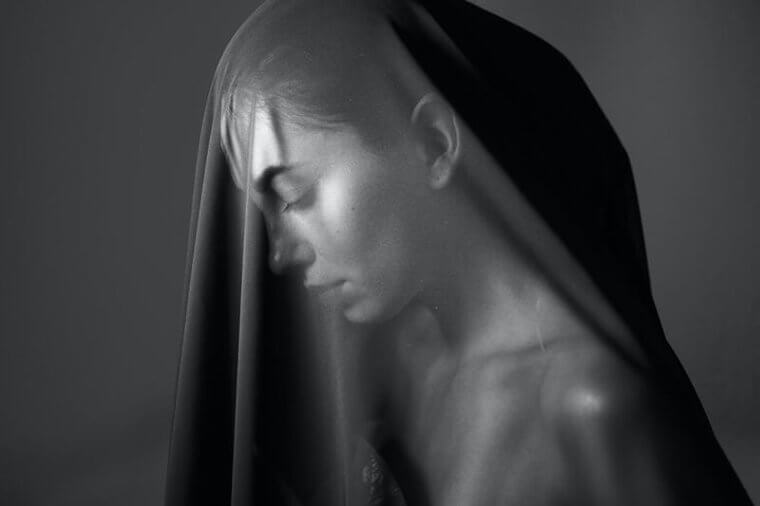Born Marie Delphine McCarty in 1787, she came from a well-to-do white Creole family living in New Orleans. Delphine’s grandparents had originated from Ireland, and then moved to then-Spanish-controlled Louisiana, making her part of the second generation to be born in America. The family owned many plantations and had a number of slaves - they were undoubtedly a wealthy clan. Although Delphine had her fair share of heartbreak and trouble, she was, on the outside, a rich socialite during her time. That is until a fire broke out and exposed the woman for who she truly was.
Her Childhood and Family
Delphine was born in the midst of what was known as the ‘slave revolt.’ This was simply a time of protests to encourage freeing all slaves, but it did end in some horrific violence. Delphine’s own uncle was killed by his plantation slaves when she was just a child. This did lead to a constant worry that slave owners could be harmed.
During Delphine’s childhood, there were also a lot of inter-racial relationships beginning in Louisiana, which hadn’t really been seen before. After Delphine’s mother died, her father began a relationship with a free quadroon (a person who is one-quarter black by descent) and they had a daughter who they named Delphine as well. Delphine and her brother became godparents of this new half-sibling.
Delphine Married When She Was 14
When Delphine was just 13 years old, she began a scandalous relationship with Ramon López y Ángulo, a widowed Spanish royal officer. Besides Ramon being 35 - a 22-year gap between him and his wife - he was also not supposed to wed a local woman without permission. But, young and in love, the two did marry before they received the correct authorization.
Delphine and Ramon were married for four years and while accounts of what happened during this time differ, what we do know is that at some point a young and pregnant 19-year-old Delphine and her husband were on a ship to or from Spain. But Ramon never made it to his destination and died on the ship. Not long after his death, Delphine gave birth to their daughter, Borja.
She Married Again When She Was 20
A young, pretty, and rich girl did not have to stay single for very long in 1700s Louisiana. The widowed Delphine met Frenchman Jean Blanque near her twentieth birthday - interesting, only a few weeks after her mother had died and left her a substantial inheritance. Blanque was wealthy on his own, though, and was a very busy businessman with his hands in many pots - today we’d probably call him a hustler.
The couple had four children, which made five with Delphine’s first daughter. Together, Delphine and Blanque had quite a sizable fortune, consisting of two plantations and a double-story townhouse on Royal and Conti. This introduced the couple into New Orleans’ high society. But Blanque was also much older than Delphine, and he was also a widower. Delphine would end up a widow yet again before she turned 30.
Her Second Husband Left Her With Plenty of Debt
Jean Blanque died in 1815 when Delphine was only 28 and Blanque was 50. Now with five children to take care of on her own, she was also forced to take care of Blanque’s estate. And this is when she realized that their cushy life had not been as black-and-white as she had thought.
Blanque had debt - and a lot of it. In total, the family was now in $160,000 debt after Blanque’s death. Delphine had no way to pay this since his estate was linked with hers, and this left her in a very tricky situation. Not only did she need to support her children herself, but she also needed to find a way to wipe her deceased husband’s debt.
LaLaurie Almost Lost Everything
The only way for Delphine to survive after her second husband’s death was for her to renounce their community property to the courts. She also had to forfeit all of the mutual assets that she owned with Blanque. But this allowed her to save her personal assets. It took almost 10 years for Delphine to auction off Blanque’s property and slaves in order to pay off the debt.
But she was sneaky in these auctions, often bidding for property and slaves herself. It is also noted that it was during this time that eight of Delphine’s owned slaves died in the space of five years. Their causes of death were unknown and could have been due to illness - or something worse.
Then She Was Left With an Inheritance From Her Father
Even though Delphine fought to retain her own property and assets after losing anything she owned in partnership with Blanque, paying off these debts was still a financial strain. If she had had to continue paying these without any income, her wealth would have been completely depleted.
But in a strange and sad twist of luck, Delphine’s father died in 1824 and left each of his children a substantial inheritance. This money would have helped keep Delphine and her five children afloat while she managed her late husband’s estate.
Delphine Then Met the Much Younger Dr. LaLaurie
In 1825, Delphine met Dr. Louis Lalaurie, the chiropractor, when she took one of her children to see him. The doctor came from a respectable family in France, but he was in New Orleans to secure his career and make an attractive fortune for himself.
Lalaurie was 25 years old, and Delphine was 38 by then, but this didn’t stop the two from striking up a romance. Delphine was an older woman, but she had considerable wealth. It wasn’t very long before Delphine fell pregnant with her sixth and final child - out of wedlock. This, of course, was scandalous at the time.
Becoming Madame Lalaurie
Five months after Delphine and Louis’s baby boy, Jean Louis Leonard Lalaurie, was born, the two finally tied the knot. Delphine then became Madame Lalaurie, as we know her best. Her husband became a new father and the husband of a very wealthy wife in his new country.
Delphine added to the marriage contract that she would keep control of her entire estate, including property, slaves, and assets totaling $67,000. Louis Lalaurie was young and had only $2000 to his name, with most of his estate still tied up with his mother’s. The relationship seemed strange since Delphine did not need Lalaurie to continue the life she was accustomed to.
Madame LaLaurie’s Massive Home in the French Quarter
At first, the new couple and the younger children lived on Delphine’s riverfront plantation which was located below the city. But to live her extravagant life again, Delphine wanted to be back in the city living among the society she was a part of.
In 1831, Delphine bought two lots on the corner of Royal and Hospital. She managed this in her own name, and her husband mostly left her to her own devices. The original house was converted into a double-story mansion which included a slave quarter. The family soon moved to live in this mansion.
Delphine’s Marriage Crumbled Soon After She Moved Into Her Mansion
Despite their lavish home and status, Delphine and Louis seemed to have a strained relationship. It was strange from the beginning but seemed to become even worse as time went on. There were numerous reports from those close to the couple that spoke of many fights happening.
In 1832, Delphine could no longer live with her husband, stating that he "treated her in such a manner as to render their living together insupportable." She petitioned the courts for separation, saying that Lalaurie had beaten her. Dr. Lalaurie decided to move to his new home Plaquemines Parish.
The LaLaurie Slaves Weren’t Always Unhappy
At first, the city of New Orleans was mostly in shock at how well Delphine treated her slaves - which must say something about those who were not as kind to their slaves. She even ended up manumitting (or releasing) a slave in 1819 according to her late husband’s wishes, and again in 1832.
And whenever Delphine was seen in public with slaves, she always seemed extremely polite and kind to them. While she was living in the LaLaurie mansion, Delphine had numerous slaves of all ages, including young children and much older slaves like her 70-year-old cook.
But There Were Horrible Stories
It seems that the more Delphine hosted lavish balls and fancy dinner parties in her new home, the harder it was for her to keep up the facade she had in terms of her slave-keeping. Soon, rumors began to circulate, as they did very easily during this time.
Stories of Delphine mistreating her slaves spread like wildfire. There was even gossip about a young girl who was being punished by Delphine and ran to the top floor of the house. The girl is then thought to have fallen or jumped or perhaps pushed out of the window and fallen to her death. But there are no accurate reports of this.
New Orleans Laws on Slaves
These rumors were more than just gossip because, at the time, New Orleans had somewhat strict laws about how slave owners were to treat their slaves. So if it were true that Delphine was abusing her slaves, this would have been a criminal offense rather than just something to look down on.
Although, even though it was a law, the punishments didn’t appear to be incredibly severe. Rather, if you were caught mistreating your slaves, you would likely be forced to sell them, and maybe pay a fine. It was quite easy for a wealthy woman to solve any problems she might come across in terms of slave treatment.
The April 10, 1834, Fire That Exposed All Secrets
Amid these rumors, a tragedy struck the LaLaurie mansion. On April 10, 1834, neighbors noticed that Delphine’s stately home was on fire and many rushed to the scene to help. The fire looked like it had started in the mansion’s kitchen.
Within a short space of time, police and the fire brigade arrived at the house to put out the fire and make sure everyone was safe. While the LaLauries were busy removing their valuables, police rescued a 70-year-old slave from the kitchen who admitted to starting the fire. This woman decided to choose death over a coming punishment from Madame LaLaurie.
Not Everyone Escaped the House Immediately
LaLaurie’s cook also told police about the upstairs slaves’ quarters, which is where she was terrified of ending up. She explained that anyone who went up there never seemed to come back down. This revelation told police and bystanders something else too...
After seeing Madame LaLaurie and her family leave the house, many of her neighbors began worrying about anyone who had been left inside. The city was small and everyone knew that Delphine owned slaves, so where were the slaves now that the home was up in flames?
The LaLauries Acted Very Strangely
The people who were helping wanted to go into the house and make sure that all of the slaves were out and safe. But when they asked Dr. LaLaurie for the key to the slaves’ quarters, they were met with a very rude refusal. For some reason, the LaLauries were not cooperating in the rescue of the slaves that they had been so kind to in public.
In fact, one of the helpers was Judge Jean-Francois Canonge and he claimed that when he spoke to Dr. LaLaurie, he was told that “there are those who would be better employed if they would attend to their own affairs instead of officiously intermeddling with the concerns of other people.” Rather than waste precious time arguing, the helpers chose to simply break the door to the attic down.
Uncovering the Horrid Truth
The scenes found behind that door likely haunted those unlucky enough to be confronted with them that day. The attic, which was meant to be slaves’ quarters, was more like a chamber of torture. There were chains on the walls and there were slaves in absolutely dire conditions.
Sources vary about exactly how many slaves were found in the house, and about how badly they had been mistreated. But we do know that there were at least seven people locked behind that door. Many were too weak to walk and they had varying wounds and injuries, all seemingly inflicted by Madame LaLaurie.
The State of Delphine’s Slaves Was Shocking
Regardless of which account is true, the fact is that the state of Delphine’s slaves was inhumane and ghastly. There were reports of slaves who had their intestines pulled out of their bodies and wrapped around them. And some who had their eyes gouged out. Some also spoke of a woman who had animal feces shoved into her mouth and her lips sewed shut.
And many of the slaves were chained with heavy iron collars. Some reports also claimed that bones had been found buried in Delphine’s courtyard, including those of a young girl. All of the slaves found in the LaLauries’ house were removed and given medical treatment.
Did Delphine Appear in Court Before?
Once it was discovered that Delphine was far from the kind lady that she had worked so hard to make her neighbors believe she was, other secrets began revealing themselves. It suddenly came out that Delphine was believed to have already appeared in court for slave mistreatment.
Although it was believed that Delphine had already been apprehended by the law and that she had been made to pay a fine and sell a number of her slaves, no one could prove this. The court records from this time had all been lost, taking with them any hard evidence of Delphine’s previous misdemeanors.
Her TV Debut
As is customary in the modern entertainment industry, it wasn't long before Delphine LaLaurie's horrific tale got its own television adaptation.
In 2013, the third season of the popular show American Horror Story was released, and this time it also featured LaLaurie's character, played by the admired actress Kathy Bates. The show put a slight supernatural spin on the terrible deeds she had done, and LaLaurie's character proves so successful that it even earned Bates an Emmy award for her performance.
One of LaLaurie’s Slaves Helped Her Escape
After the injured, sick, and weak slaves were removed from the house, a group had gathered to wait for the sheriff to come and arrest Delphine for the torture she had inflicted on these slaves. But no sheriff arrived. Rather, Delphine’s enslaved coachman arrived to take her away in her coach.
And so Delphine, very calmly, stepped into the coach and left the crime scene. This angered the mob outside her home greatly. In no time, the group was entering the burnt house and leaving with whatever valuables they were able to carry out. They also smashed windows and broke down the inside walls.
Delphine Was Spotted Sailing Towards Paris
Delphine had left New Orleans without much consequence, but not much is known about her whereabouts after this. Both Madame LaLaurie and her coach driver were presumed missing, with no reports of them being seen after leaving the house on the day of the fire.
It’s believed that Delphine, reunited with her estranged husband, fled to a nearby town to sort out her affairs and make sure her son-in-law had power of attorney over her estate. This would allow her to leave but still have some access to her money, although she could never return to New Orleans. It’s thought and reported that she and Louis set sail to Paris.
Madame LaLaurie Is Believed to Have Died in Paris
There isn’t much known about Madame LaLaurie after she was all but run out of New Orleans. It is thought that she lived in Paris with her husband for a while, and was receiving funds from her son-in-law back in America. Delphine’s daughter did claim to receive letters from her mother.
It is unclear when or how she died, but it is thought that it happened in France somewhere between 1842 and 1849. There is also a gravestone with Delphine’s name on it in a New Orleans cemetery - this puts her death in 1842.
Is the House Haunted?
Madame LaLaurie’s mansion was home to very morbid and sadistic events. And even though the fire and the mob damaged the building badly, the house still stands on its corner. At some point, it was turned into a girl’s schoolhouse, and today it seems to mostly be a tourist attraction and film location.
But there are many stories about the house being haunted. This is sometimes thought to be the spirits of the tortured slaves that were not fortunate enough to make it out of the hell-house. But others think that perhaps Madame LaLaurie herself haunts the house, with her evil spirit being a menacing presence in the building.
Another Famous Ghost
Of all the celebrities in Hollywood, who would you think would be crazy enough to buy an apparently haunted house? Well, in case you never guessed it, the person is none other than the Ghost Rider himself, Nicolas Cage.
Cage was once the owner of the notorious LaLaurie Mansion. It's perhaps fitting that the man who played Ghost Rider would be interested in living in a house with a murderous past. Cage eventually lost the mansion to forclosure in 2009.
The Haunting Tale of Belle Gunness
Although Belle Gunness wreaked havoc in Illinois and Indiana, she was born in Selbu, Norway. On November 11, 1859, Brynhild Paulsdatter Storset was born as the youngest of eight children. She started working at the tender age of 14, milking and herding cattle on neighboring farms until she had saved enough money to move across the pond to the United States.
In 1881, she arrived in Chicago and changed her name to Belle. It wasn’t long before she met her first husband, Mads Ditlev Anton Sorenson, and the pair got married in 1884. Little did he know that he would also be her first victim.
In 1881, she arrived in Chicago and changed her name to Belle. It wasn’t long before she met her first husband, Mads Ditlev Anton Sorenson, and the pair got married in 1884. Little did he know that he would also be her first victim.
Their Life Together Was Marked by Tragedy
Unfortunately for the newlyweds, their luck was in short supply. The couple experienced one traumatic disaster after another. First, they opened a candy store but it subsequently burned down. In 1900, their home also went up in flames but the couple was able to claim from insurance.
Belle and Mads tried to grow their family, having four children together. Sadly, two died of acute colitis. In hindsight, it was speculated that the death of these two children was eerily similar to poisoning. However, the most shocking death was yet to come...
A Death in Perfect Timing
Death outside of old age always seems untimely, but for Belle Gunness, her husband’s death on July 30, 1900, came at the perfect time. Mads Sorenson died suddenly at the hands of a cerebral hemorrhage. Belle explains that her husband came home with a headache so she treated him with quinine and the next moment he was dead. But it wasn’t his cause of death that was peculiar. It was the timing.
The day of Mads Sorenson’s death happened to be the last day of his life insurance policy as well as the first day of his new policy. Belle Gunness reaped the rewards of both policies, walking home with a total of $150,000 in today’s value. At the time, the convenient date wasn’t considered more than a coincidence, but these theories would change over time.
The Bounty Allowed Belle to Start Her New Life
Whether it was due to heartache or the desire to escape being busted, Belle Gunness decided to leave Chicago and start over again. Belle gathered her two surviving daughters, Myrtle and Lucy, as well as her foster daughter, Jennie Olsen, and moved from Chicago.
Armed with a mountain of cash, Belle Gunness bought a 48-acre farm in La Porte, Indiana, and settled down to start her new life. Neighbors were immediately intrigued by the burly 200-pound newbie. They described her as a “rugged” woman that was noticeably strong.
Belle Finds Husband Number Two
During the move into her new Indiana home, Belle impressed her neighbors by showcasing her immense strength. One man claimed to see her carry a 300-pound piano all by herself. Expressing his amazement, Belle supposedly explained saying “Ay, like music at home.”
But it wasn’t only her neighbors that were intrigued by the new woman on the block, and it wasn’t long before Belle found her second husband. In April 1902, Belle exchanged vows with Peter Gunness. However, while his surname stuck around for a while, Belle’s husband wasn’t as fortunate.
Bizarre Accidents Led to More Death
Unfortunately, Belle and Peter’s honeymoon phase was cut short. Peter had brought along an infant daughter from a previous relationship. Sadly, the baby girl died from mysterious circumstances while in Belle’s care. Peter would follow his daughter to the grave after a sausage grinder fell off of an unstable shelf - landing square on his head!
The coroner assessed Peter’s smashed skull and described it as “a little queer” but nothing more came of the evaluation. In the end, Belle Gunness collected Peter’s life insurance and lined her pockets with money from his life insurance policy.
Whispers of the Truth Emerge
While the coroner shrugged off the cause of Peter’s death as strange rather than malicious, someone else started to grow suspicious. Belle was still the parental guardian of her foster daughter, Jennie Olsen. The young girl was wary of her mother and supposedly told her schoolmates, “My mama killed my papa. She hit him with a meat cleaver and he died. Don’t tell a soul.”
The cat was out of the bag, and Belle was determined to stop the rumors in their tracks. Not long after admitting the truth, Jennie Olsen mysteriously disappeared, with the explanation that she’d been sent to school in California. Tragically, her body was discovered in Belle’s hog pen years later.
Developing a System to Collect Her Paychecks
With two murdered husbands, Belle Gunness started to formulate a plan to allure men, kill them, and collect their policies. She started to put adverts in the paper, asking for men to invest in her farm. The advertisement was a major hit, promising the opportunity for potential business.
Belle was also writing lovesick columns in the paper with the intention to attract wealthy bachelors. Harold Schechter, a true-crime author who wrote about Belle, says, “Like many psychopaths, she was very shrewd in identifying potential victims. These were lonely Norwegian bachelors, many completely cut off from their families. [Gunness] beguiled them with promises of down-home Norwegian cooking and painted a very seductive portrait of the kind of life they’d enjoy.”
What Drove Belle Gunness to Murder?
Although the logic may be twisted and perverted, most serial killers have a reason to kill. No one is really certain about what drove Belle Gunness to murder - whether it was the need for money or bloodlust - but she showed no sign of slowing down.
Belle Gunness would frequently post personal ads in Norwegian newspapers, feigning the desperation to find a new companion. One advert read, “Personal — comely widow who owns a large farm in one of the finest districts in La Porte County, Indiana, desires to make the acquaintance of a gentleman equally well provided, with view of joining fortunes. No replies by letter considered unless sender is willing to follow answer with personal visit. Triflers need not apply.”
The One That Got Away
Most of the men that arrived on Belle’s porch weren’t lucky enough to ever depart. Instead, they disappeared off the face of the earth, leaving their cash behind for Belle’s benefit. In and among these unlucky chaps was a man named George Anderson who had the fortune of escaping Belle’s clutches.
George Anderson made the journey to Indiana from Missouri with a bagful of money and the hope to win Belle’s heart. What he didn’t expect was to wake up in the middle of the night with Belle looming over him. Frightened by the expression that he saw in her eyes, he made a hasty escape.
The Community Got Suspicious About Belle’s Behavior
Belle Gunness's killings were gaining momentum and she was earning a pretty penny in the process. However, her neighbors smelled a rat when she started spending a suspicious amount of time at her hog pen, especially at night. Another strange habit was her investment in wooden trunks that she would carry out on her own.
Men would continue to arrive at her abode, only to vanish without a trace. One of her farmhands later spoke to the media, quoted in the New York Tribune saying, “Mrs. Gunness received men visitors all the time. A different man came nearly every week to stay at the house. She introduced them as cousins from Kansas, South Dakota, Wisconsin, and from Chicago… She was always careful to make the children stay away from her ‘cousins.'”
Belle’s Final Victim Had Fair Warning
Despite her neighbors' rising concerns, Belle continued to post heartfelt adverts in the paper and lure her victims to the farm. In 1906, her final victim, Andrew Helgelien, read Belle’s words in the Minneapolis Tidende, a Norwegian newspaper. His heart skipped a beat and the pair started exchanging romantic words.
One particular letter from Belle was eerily foreboding, reading “My heart beats in wild rapture for you, My Andrew, I love you. Come prepared to stay forever.” Deciding to take the leap, Andrew moved to Indiana, and true to Belle’s message, he never left. Shortly after he arrived, Andrew’s dismembered body was discovered in Belle’s hog pen, along with the decaying corpses of her other victims.
A Red Flag Was Raised
The reason that Belle was able to continue her murderous spree was that she flew under the radar. However, Belle made a critical mistake when she killed Andrew Helgelien because he had family left behind who missed him.
When Andrew stopped answering letters, his brother Asle grew concerned. He reached out to Belle and demanded answers, but she had an answer ready. She said, “You wish to know where your brother keeps. Well, this is just what I would like to know but it almost seems impossible for me to give a definite answer.” Trying to throw Asle off course, she suggested that Andrew had moved to Chicago or even back to Norway – but Asle didn’t take the bait.
The Farmhand Would Be Belle’s Downfall
As Asle’s worry started to mount about his brother, Belle had other concerns to consider. It wasn’t only her pen pals that fell in love with Belle Gunness. It seemed as though her farmhand, Ray Lamphere, started to develop feelings for her too.
These romantic feelings started to grow, and Ray began to view her male visitors through eyes of jealousy. This building resentment started to put a strain on their relationship. Ray allegedly stormed away from the property after Andrew arrived. With these boiling negative emotions, Belle was in the hot seat.
Belle Got the Help of an Attorney
Ray Lamphere shook the nest with his jealous rage, causing trouble for Belle. Deciding that she needed extra help, Belle reached out to an attorney in La Porte. She explained that she had fired Ray because of his jealousy and this sparked madness in him. Belle feared for her life and needed the attorney’s help to make a will.
In 1908, Belle told the attorney, “That man is out to get me. I fear one of these nights he will burn my house to the ground.” While this may seem like a fairly normal procedure, what happened next wasn’t so routine. Belle left the attorney’s office and stopped by the store, filling her cart with toys for the children and two gallons of kerosene. That night, her farmhouse went up in flames.
A Mysterious Fire That Left Behind a Disaster
The timing of Belle’s visit to the attorney, purchase of kerosene, and the disastrous fire was uncanny. The next day, authorities uncovered the bodies of three children buried in the rubble of the basement, as well as the charred head of a woman who appeared to be Belle Gunness. Ray Lamphere was high up on the police radar and was charged with murder and arson.
When word of the fire reached Asle Helgelien, he arrived on the scene, hoping to find his brother’s body. At first, his search heeded no result and he was just about to give up when he struck gold.
Asle Was Just About to Give up When He Decided to Give the Search One Final Attempt. He Said, “I Was Not Satisfied and I Went Back to the Cellar and Asked [one of Gunness’ Farmhands] Whether He Knew of Any Hole or Dirt Having Been Dug up There About the Place in Spring. ” This Final Effort Is What Was Needed to Uncover Belle’s Horrific Secret.
Asle was just about to give up when he decided to give the search one final attempt. He said, “I was not satisfied and I went back to the cellar and asked [one of Gunness’ farmhands] whether he knew of any hole or dirt having been dug up there about the place in spring.” This final effort is what was needed to uncover Belle’s horrific secret.
The farmhand admitted that Belle had asked him to level several soft cavities in the ground, using the excuse that they covered trash. This new information piqued Asle’s interest and he started to dig up the dirt by the hog pen, uncovering the horror that lay underneath. First, the group discovered Andrew’s dismembered body parts that had been stuffed into an oozing burlap sack. But that’s not all.
A Grisly Unearthing and Rising Suspicions
It wasn’t only Andrew’s decaying body that was uncovered by the hog pen. Investigators found another 11 sacks that were filled with “arms hacked from the shoulders down [and] masses of human bone wrapped in loose flesh that dripped like jelly.” Not all of the bodies were identifiable but Jennie Olsen was one certainty.
The news of Belle’s horrific crime spread like wildfire and earned her a few terrifying nicknames such as “Black Widow,” “Hell’s Belle,” the “Indiana Ogress,” and dubbing her home “horror farm” and “death garden”. These horrific findings led authorities to question whether the headless corpse in the farmhouse ashes actually belonged to Belle Gunness. The size of the skull, unmatched DNA studied years later and a set of teeth found among the ruins only added to this skepticism.
The Rumors of Belle Gunness Live On
After uncovering Belle’s terrible crimes, the charges against Ray lost weight. Ultimately, he was charged with arson, but not murder. When asked about Belle’s killings, Ray said, “I know nothing about the ‘house of crime,’ as they call it. Sure, I worked for Mrs. Gunness for a time, but I didn’t see her kill anybody, and I didn’t know she had killed anybody.”
Later, on his deathbed, Ray admitted to a fellow inmate that he helped kill 42 men. Belle would spike their coffee, smash their heads, cut them up, and put them in sacks. Ray would then do the “planting”. Another rumor haunting history is that Belle faked her own death. In 1931, a woman named Esther Carlson was arrested in Los Angeles for a crime eerily similar to those committed by Belle. She died while awaiting trial, but the resemblance between the two women was never forgotten.

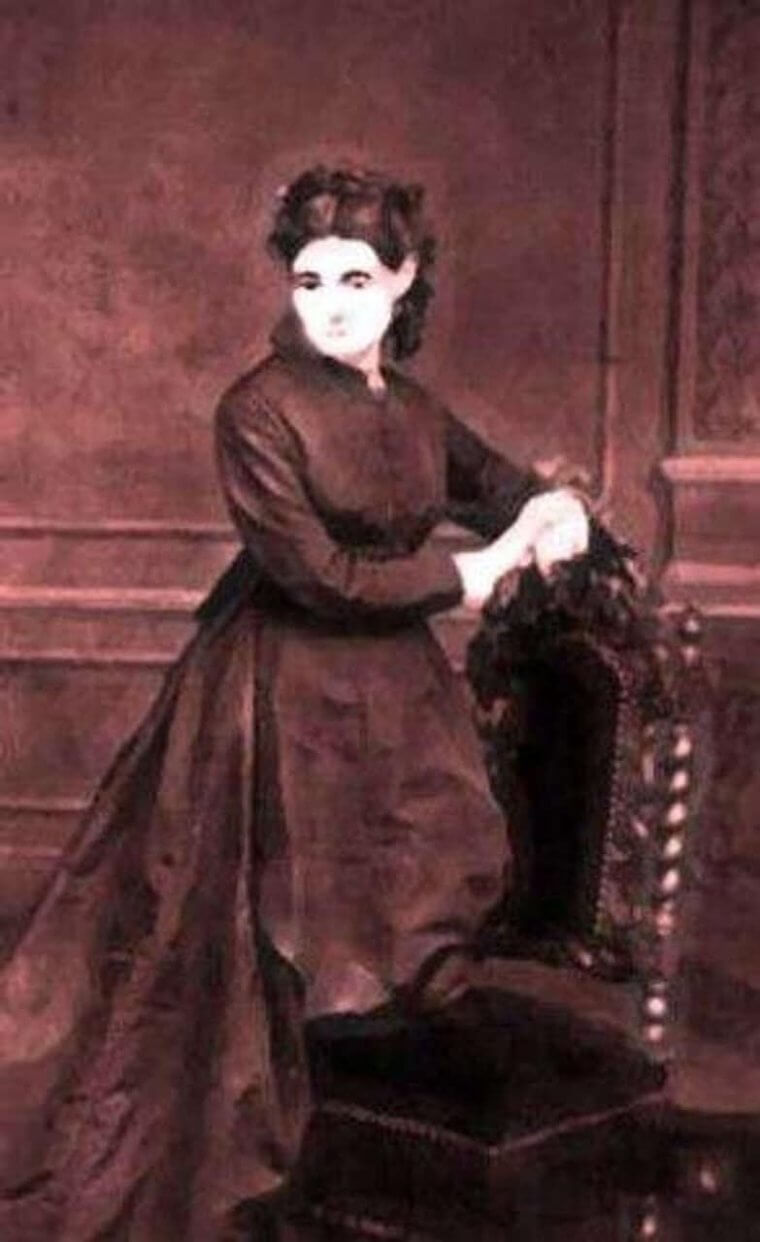


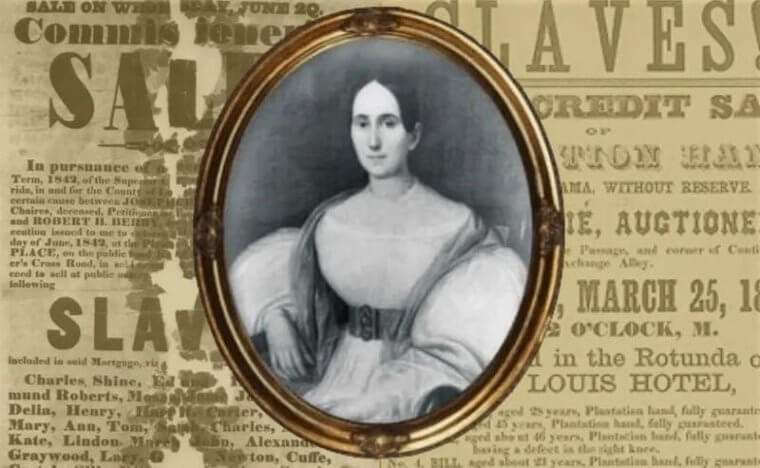
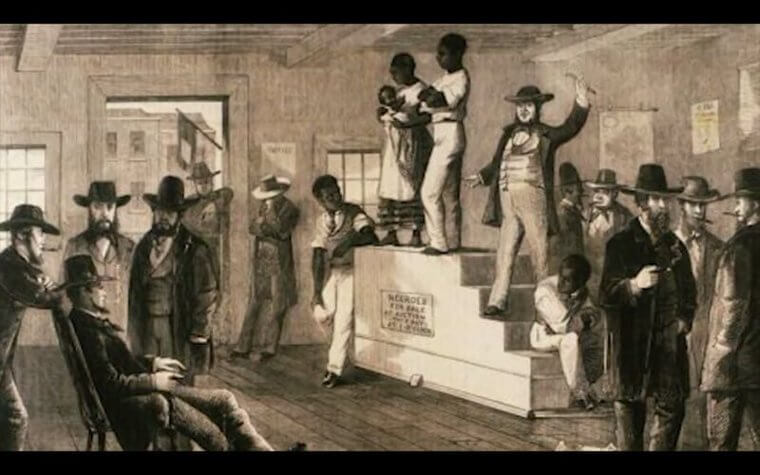


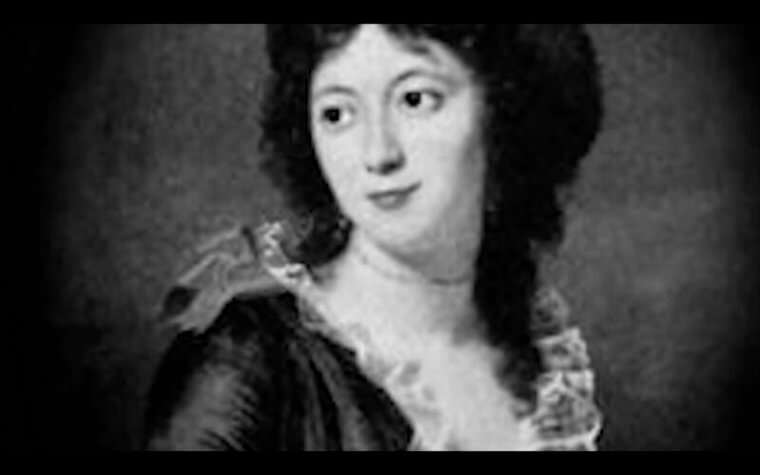
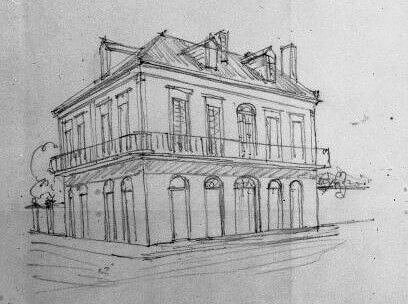

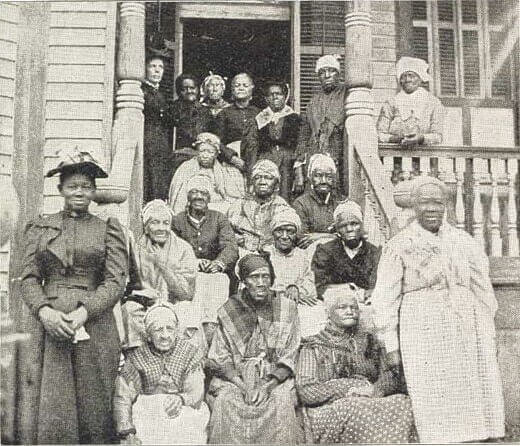
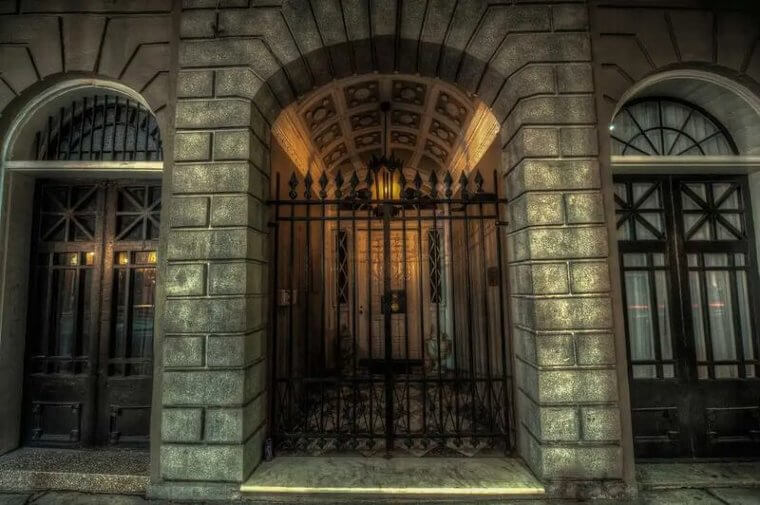

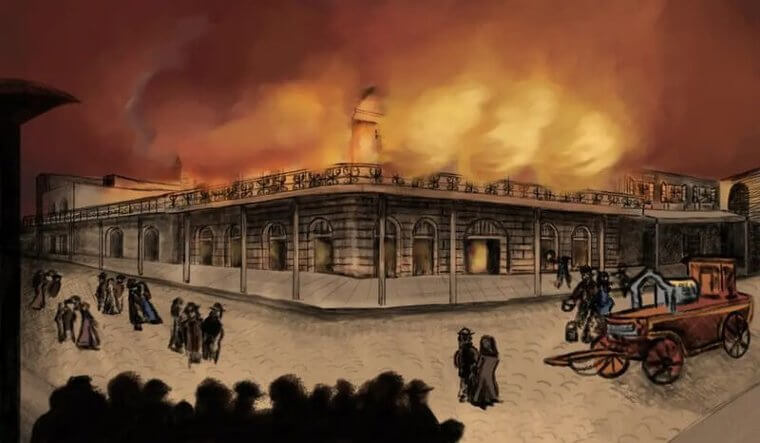

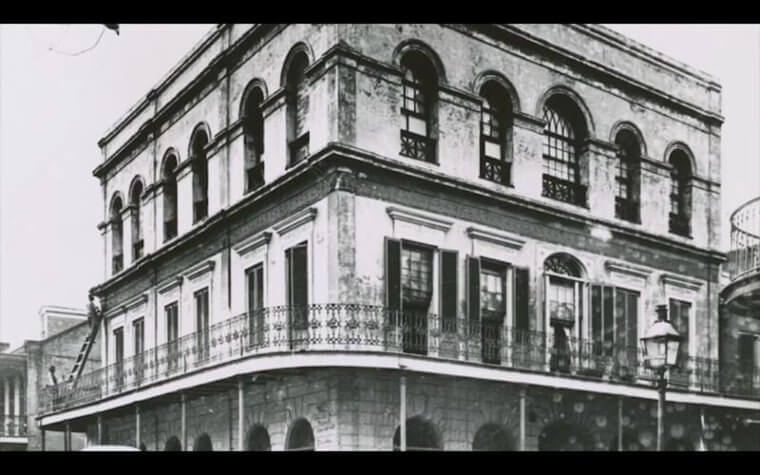
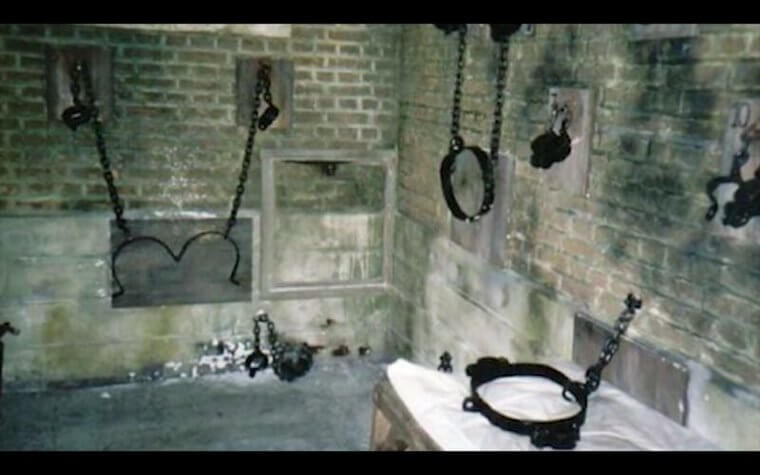
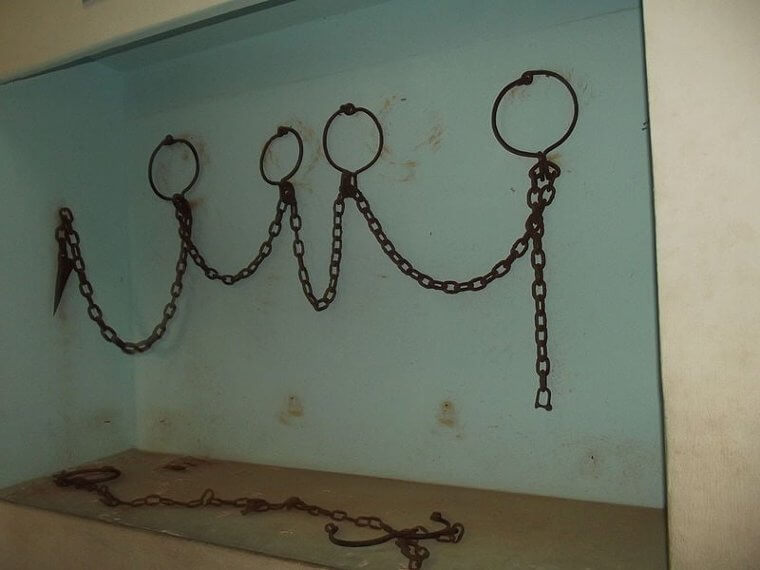
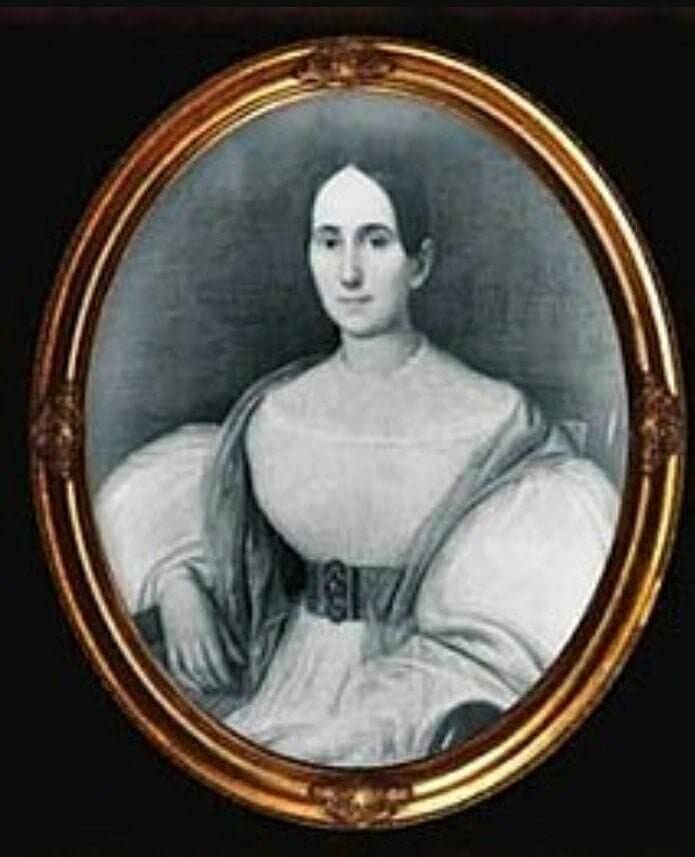

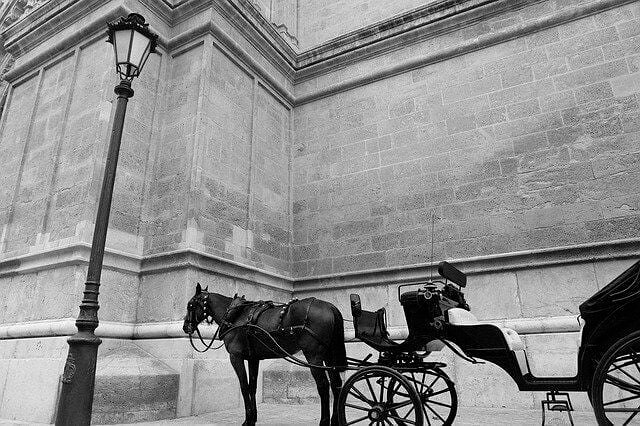
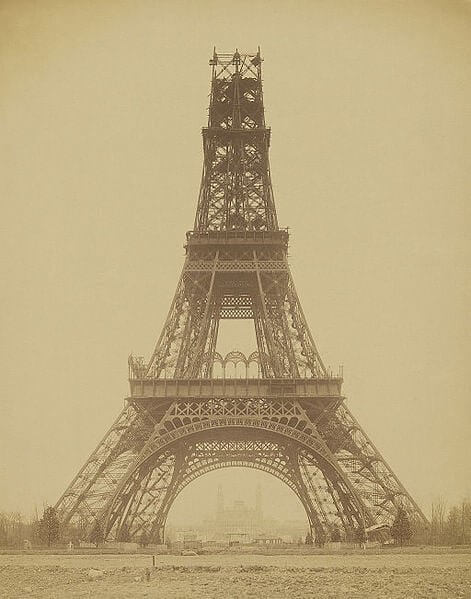
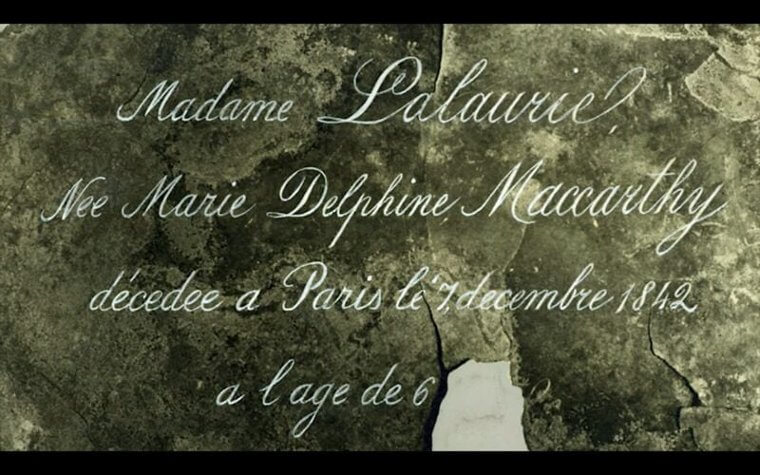
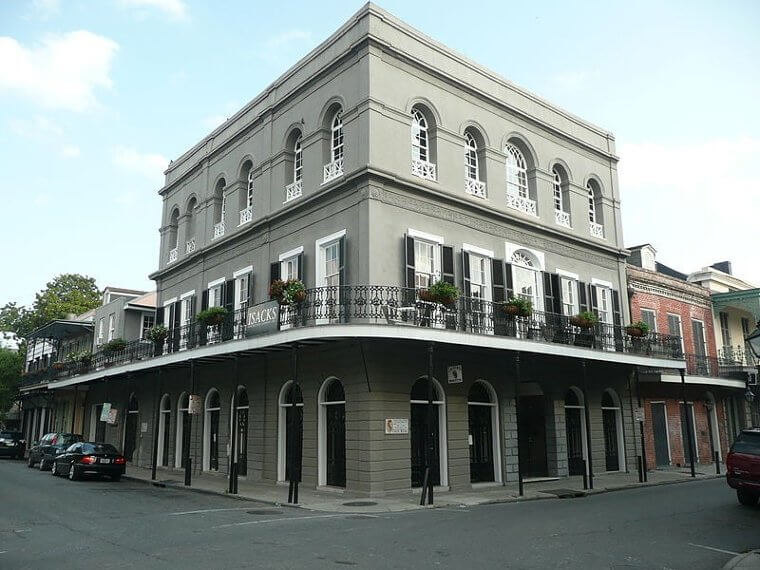

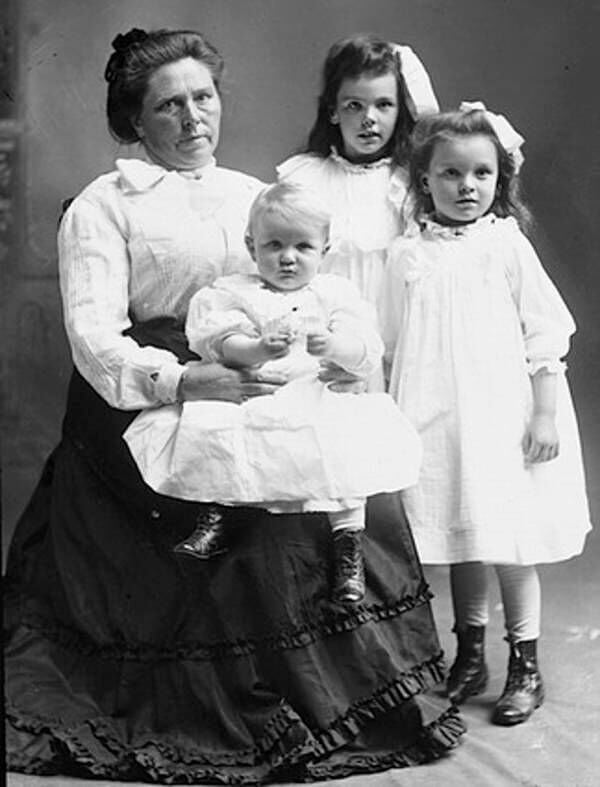


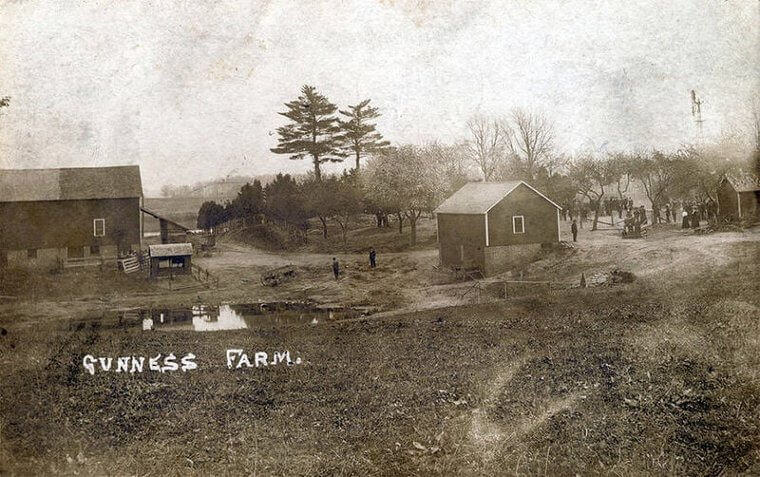

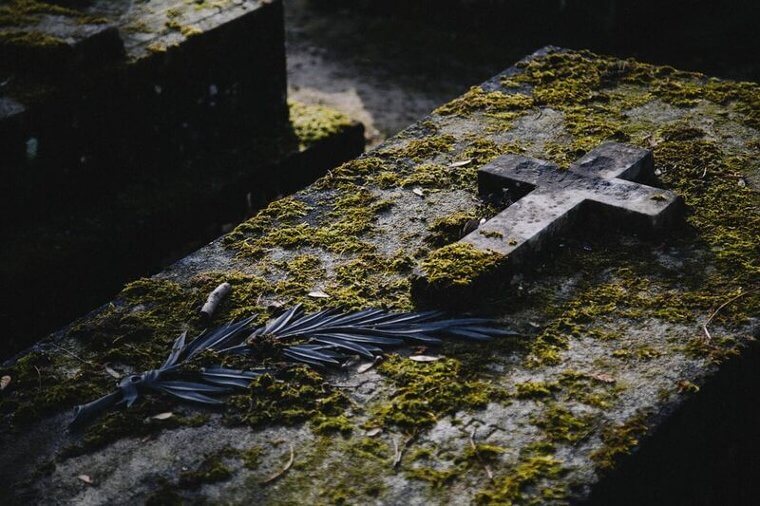
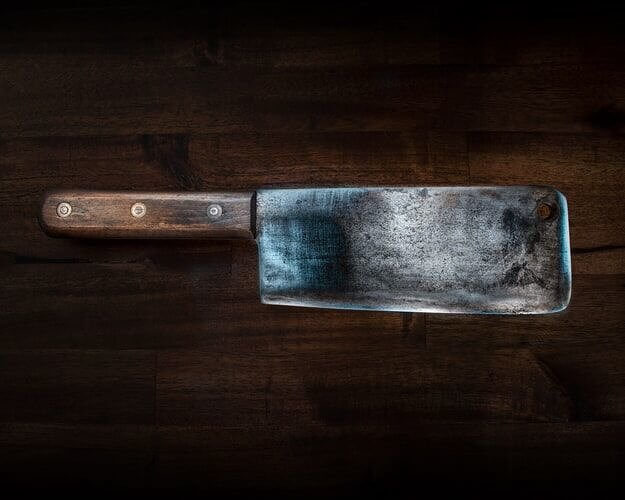


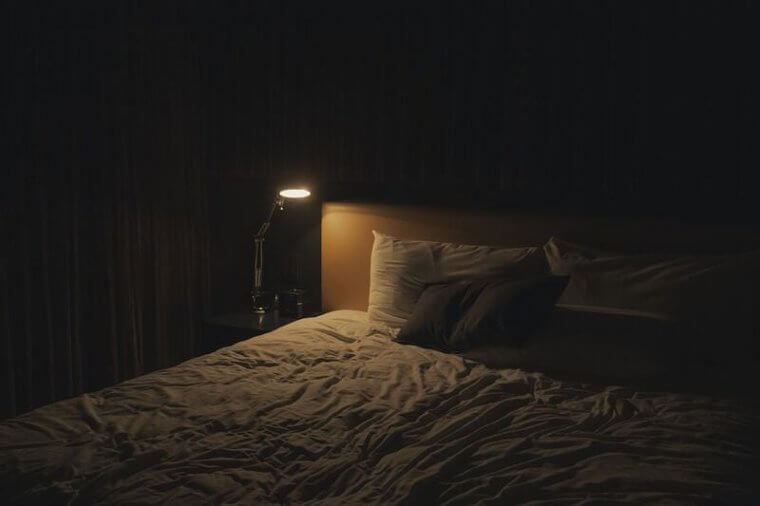
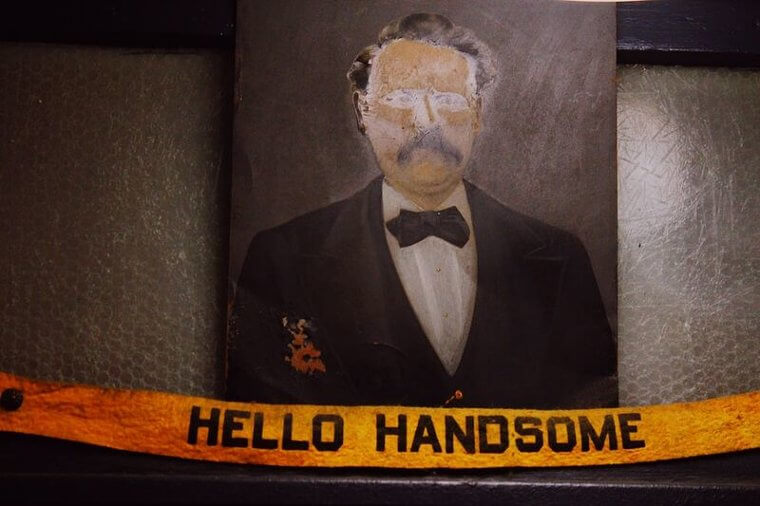


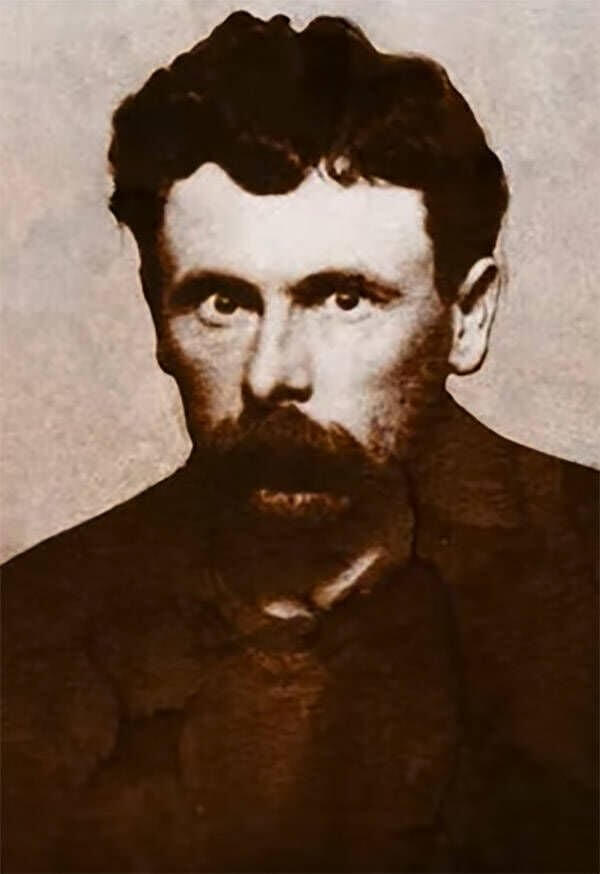


![Asle Was Just About to Give up When He Decided to Give the Search One Final Attempt. He Said, “I Was Not Satisfied and I Went Back to the Cellar and Asked [one of Gunness’ Farmhands] Whether He Knew of Any Hole or Dirt Having Been Dug up There About the Place in Spring. ” This Final Effort Is What Was Needed to Uncover Belle’s Horrific Secret.](https://posts-cdn.kueez.net/zWJriJCSxy7CD3b6/image-HBE738QxnTdDoWNB.jpg)
